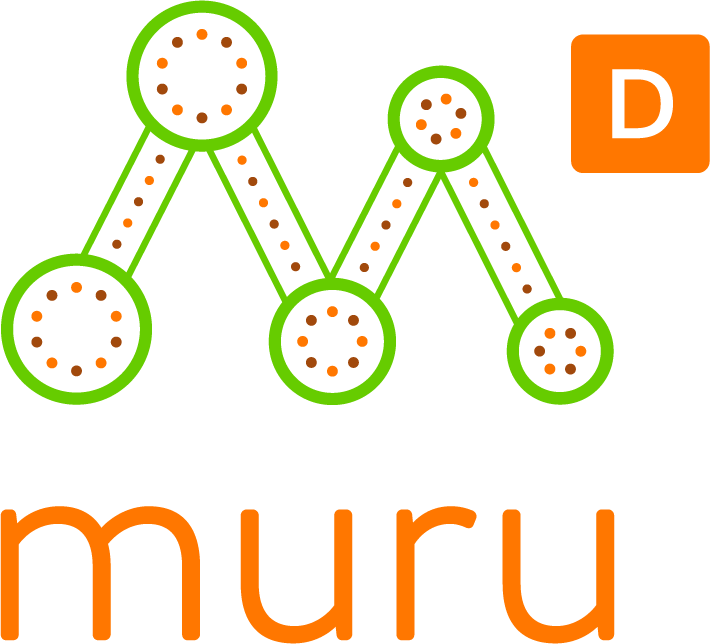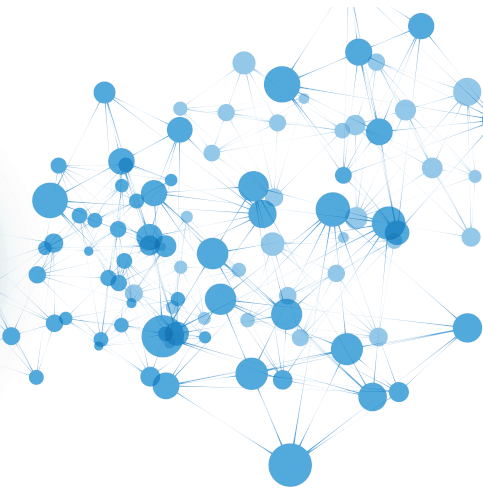AI in Supply Chain: What is it and why?
By Richard Savoie
One of the most frequent questions that we get from supply chain, logistics, and mobile workforce organizational leaders is: Why? That is, why is AI disrupting the industry and more importantly, why do I need to know about it? And in most cases, that question is accompanied by: What? That is, what exactly are machine learning and artificial intelligence? It makes sense that these technologies aren’t on everyone’s radar yet, but for those that are willing to investigate before the mainstream does, there are huge payoffs.
Today we find ourselves in another transformational era in human history. Much like the agricultural and industrial revolutions before it, the digital revolution is redefining many aspects of modern life around the world. Artificial intelligence (AI) plays an increasingly central role in this transformation. In recent years, AI has come roaring out of research laboratories to become ubiquitous and ambient in our personal lives, so much so that many consumers do not realize they use products and applications that contain AI on a daily basis.
AI is not new. The term was coined in 1956 by John McCarthy, a Stanford computer science professor who organized an academic conference on the topic in the summer of that year. The field of AI has gone through a series of boom-bust cycles since then, characterized by technological breakthroughs that stirred excitement about the topic, followed by subsequent periods of disillusionment and disinterest known as ‘AI Winters’ as technical limitations were discovered. As you can see in the figure, today we are once again in an ‘AI Spring’.
Current understanding of AI can quickly become convoluted with a dizzying array of complex technical terms and buzzwords. Two terms in particular are important in understanding AI – machine learning which is a subset of AI and deep learning which is a subset of machine learning.
Whereas AI is a system or device intended to act with intelligence, machine learning is a more specific term that refers to systems that are designed to take in information, usually within a specific domain, and learn from what they have been given. These systems draw on the ability to evaluate and categorize received data, and then draw inferences from this. The output of this process is an insight, decision, or conclusion.
For example, when the input is an image of you uploaded to a social media platform, image recognition software analyzes the content of the image pixels for known patterns using machine learning algorithms in the hidden layers, and produces an output in the form of an automatic tag of your name in the uploaded photo. It is able to do this based on statistical probability that characteristics of the image resemble existing images you have uploaded previously.
Deep learning takes the concept of machine learning a bit further. Deep learning is about learning continually; the intention of the system is to learn from the real world and adjust the learning model as it takes in new information and forms new insights. The human visual cortex is constantly doing this without our conscious awareness; however this perceptive ability in computers is truly novel. This is the type of system that is more useful in addressing real-world data challenges, which is why deep learning systems are the ones that have been directed at extremely large and fast-moving datasets typically found on social media platforms and in autonomous vehicles. Deep learning is typically done with neural networks, which is a topic for another time!
So let’s talk through how this process works from end to end before we get to some specific examples in the supply chain and logistics industry.
Supervised learning, as the name suggests, is learning that takes place when an AI-enabled system is directly informed by humans. A doctor who evaluates x-ray images to detect cancer risk, for example, can annotate the images with his or her expert input, then feed them into an AI system to facilitate supervised learning.
Unsupervised learning takes place, when an AI-enabled system is able to identify clusters or dimensions in the data itself without additional guidance from human data or computer scientists. This technique can lead to significantly novel and unexpected results based on the data the system is exposed to. As an example in 2014, unsupervised learning is how YouTube was able to recognize cat faces from uploaded videos, simply by “watching” 10 million of them with little guidance of the desired output.
Reinforcement learning takes place when the AI system is tasked with not only processing the available inputs but also learning the ‘rules of the game’. This is based not on direct human interaction but on the amassed data from environmental responses given to the AI system. An analogous example of reinforcement learning is how infants first learn to walk: they first observe others until they find the ability to try it themselves. They then try to walk on their own many times unsuccessfully, but they improve their abilities each time until they can successfully walk unaided.
Today, AI is not merely capable of handling the rapid assembly of large and quickly changing datasets but in fact thrives on this. These big datasets make the best contribution to AI’s ability to learn when they are complex, so the more diversity in the data domain the better. This is an advantage AI systems have over other data processing methods: whereas standard systems get bogged down with large complex datasets, algorithmic improvements in recent years have improved significantly to be able to handle large volumes of heterogeneous data, enabling the detection of patterns and discovery of correlations that might not be obvious to humans or to standard rule-based systems. While these three technology advances are the main drivers of AI, considering the future of AI reveals not just a single trend, but the confluence of many underlying technology trends.
There are many reasons to believe that now is the best time for the logistics industry to embrace AI. Never before has this maturing technology been so accessible and affordable. This has already made narrow forms of AI ubiquitous in the consumer realm; the enterprise and industrial sectors are soon to follow. In logistics, the network-based nature of the industry provides a natural framework for implementing and scaling AI, amplifying the human components of highly organized global supply chains. Furthermore, companies deciding not to adopt AI run the risk of obsolescence in the long term, as competitors seize and effectively use AI in their business today.
But let’s have a little fun first. Did you know that:
•AI can find Wally faster than you.
•AI can script a car advert as well as a human.
•AI makes best-selling perfumes.
•AI coaches winning football clubs.
•AI writes and reads the news, makes pizza recipes, judges beauty contests, brews beer, and is writing the next Harry Potter.
And we’re a long way from Sky Net, trust me. For now, it’s mostly upside.
But what we’re here to talk about is how AI will contribute to:
•Financial Anomaly Detection
•Cognitive Contracts and Customs
•Predictive Network Planning
•Predictive Demand and Capacity
•Predictive Risk Management
•Intelligent Robotic Sorting & Inspection
•Anticipatory Logistics
•Intelligent Automation and Route Optimisation
Let’s look at a few examples.
Cognitive Automation refers to intelligent business process automation using a combination of AI and robotic process automation (RPA). This is the replacement of clerical labor using software robots that can be integrated into existing business applications and IT systems. As seen in the figure, RPA is not equivalent to AI; where AI is able to learn and extract insights from unstructured data, RPA is able to execute rule-based workstreams given well-structured inputs on behalf of human workers, and cannot learn beyond its initial programming.
AI-Powered Visual Inspection is another high-potential area for AI in the logistics operational environment. IBM Watson is using its cognitive visual recognition capabilities to do maintenance of physical assets with AI-driven visual inspection. In industrial sectors like logistics, damage and wear to operational assets over time are simply inherent. Using a camera bridge to photograph cargo train wagons, Watson was recently able to successfully identify damage, classify the damage type, and determine the appropriate corrective action to repair these assets. As more data was gathered and processed, Watson’s visual recognition capabilities improved to an accuracy rate of over 90% in just a short period of time. The anomalies and damages discovered by Watson were sent to a workplace dashboard managed by maintenance teams. This model and process can loosely be applied to other types of logistics assets including but not limited to aircraft, vehicles, and ocean vessels.
I love this one. Truck Platooning refers to the intelligent caravanning of groups of semi-trucks. With machine-to-machine communications and collaborative assisted cruise control technology, between two to five semi-trucks can follow each other and autonomously synchronize acceleration, steering, braking and following distance. The platoon is controlled by a human driver operating the lead truck, with a backup driver in each following truck if needed and proponents of these trials claim that the drafting advantages of this configuration, just like a Nascar or V8 race, can increase efficiency by up to 10%.
And of course, our company Staybil specialises in geo-optimisation using AI and machine learning to enhance operations, reduce fleet requirements, and get things where they need to be seamlessly. Reach out to me or visit our website for more information and to see case studies.
To help you get started on an AI implementation, here is a decision framework for two fundamental types of AI project: cognitive automation and improved insight generation. AI projects such as address management, invoice processing, and cognitive customs leverage Cognitive Automation to reduce cost through automation using three strategic value drivers:
- Reduction in the number of manual processes
- Reduction in human effort per process
- Reduction in error rate from human decision making
AI projects such as visual asset inspection, predictive network and risk management leverage improved Insight Generation to enable better decisions within the organization. This increases operation efficiency, improves customer experience, and ultimately creates profitable revenue growth through four strategic value drivers:
- Increased number of positive decisions
- Increased impact of positive decisions
- Decreased number of negative decisions
- Decreased impact of negative decisions
We believe the future of AI in logistics is filled with potential. As supply chain leaders continue their digital transformation journey, AI will become a bigger and inherent part of day-to-day business, accelerating the path towards a proactive, predictive, automated, and personalized future for logistics. Ultimately, AI will place a premium on human intuition, interaction, and connection allowing people to contribute to more meaningful work.
Originally published on the LinkedIn.


